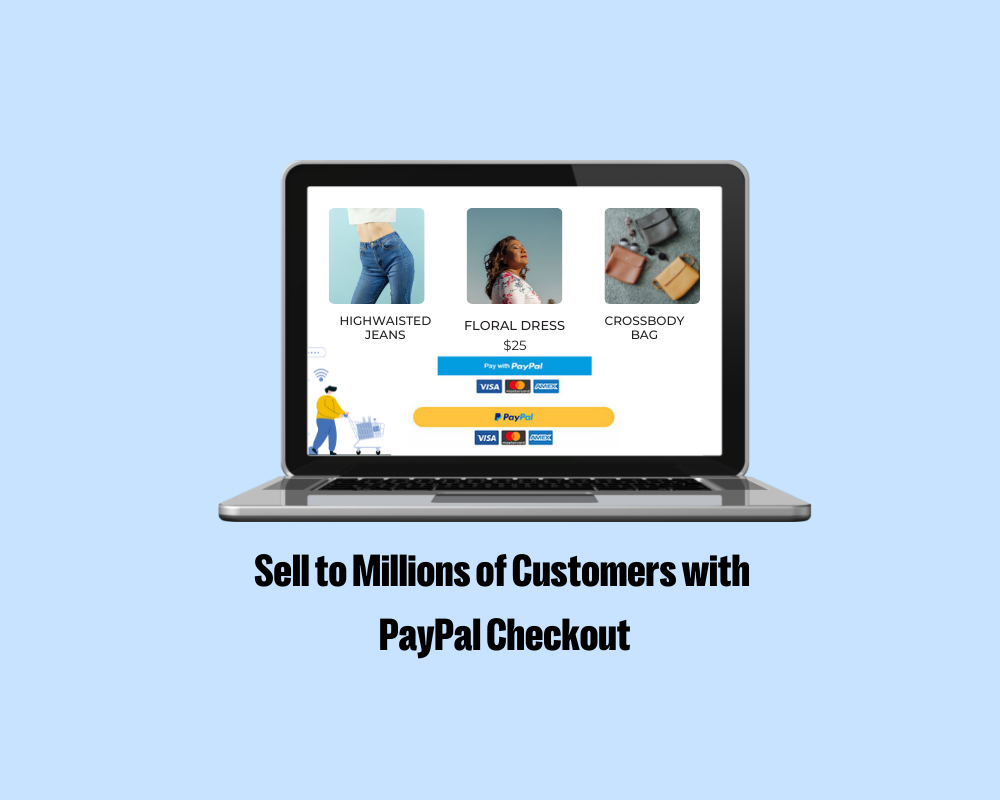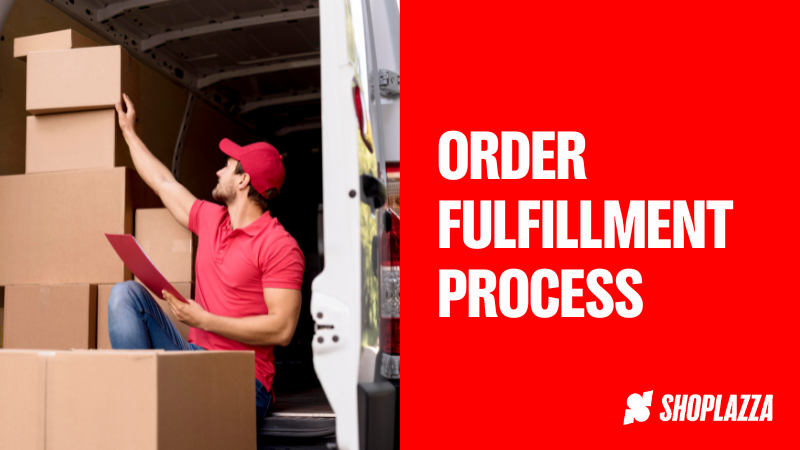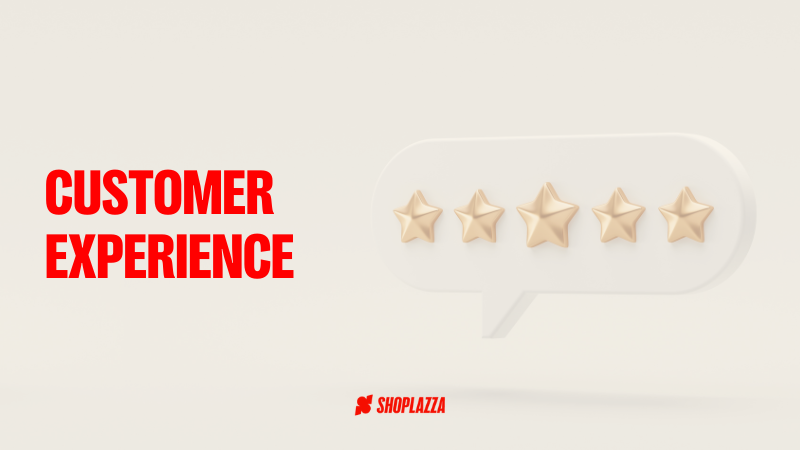
Crafting a unique customer experience can boost almost every aspect of your business, from sales to social media engagement and brand loyalty. But what exactly is a positive customer experience? Keep on reading to learn more about that, and also to check out how to create a customer experience strategy.
An e-business is made up of many different elements: social media accounts, an online website, a proper logistics process, shipping and return policies, packaging and unboxing experiences, marketing strategies, discounts and special promotions, and a whole lot more.
But among this sea of elements, there is one thing that is always present, guiding all of the rest: your customers.
Customers are the glue that holds an online business together. Without them, there are no sales, no engagement on social media, no one to ship products to, and no one to segment your marketing strategies for.
That’s exactly why making sure that your business has a solid customer experience strategy in place is so important. After all, the happier the customer, the higher your customer satisfaction rates.
And if those rates are high, they indicate that you’re delivering a good customer experience―which in turn means that your store is selling to the right people, and that those people are happy.
And you know what happy customers do? They recommend the shop they really like to other people. So, in short: All roads lead to customer experience. And today we’re talking about how to make this happen in your online store.
What is customer experience?
Customer experience (CX) is a big concept made up of two big words, and it basically means what your customers think of―and how they feel about―your brand.
Yes, we’re aware this is a broad definition. But this also means that customer experience is an interaction-based strategy: Every single interaction between customer and brand counts, and this means that there’s plenty of room to create a personalized customer experience that suits your client’s needs and demands.
Mind you, “interaction” here does not mean solely a live interaction on a customer service app, where you or someone from your team helps a customer solve an issue with their order. In fact, customer experience is a much wider concept, one that encompasses situations like:
- Replying to followers on social media
- Writing informative and relevant newsletters
- Acknowledging customer reviews
- Creating a website that’s easy to navigate
- Offering customer care services
- Allowing for different shopping options
- Streamlining the checkout experience
- Creating an unforgettable unboxing experience with memorable packaging
- Following up on post-sale
- Hitting customers with the right offer at the right time
- Offering rewards programs for repeat customers
- Creating marketing content that is in line with the customer’s identity
Want to catch up on some marketing reads before you tackle customer experience? Here are some recommendations:
-
A Complete Guide to Influencer Marketing for Businesses of All Sizes
-
Marketing Budget: How to Invest Your Money in Marketing Strategy
Case in point: a customer experience strategy in action
If you’re feeling a bit overwhelmed with the definition we shared above, don’t be! While at first glance creating a customer experience strategy might seem like a lot of work, there are tons of actionable steps you can easily implement without too much of a hassle.
In fact, a good rule of thumb to decide the most pressing issues you need to work on is just placing yourself in your client’s shoes. Think of some useful actions you can take to make their customer journey more appealing and more enticing, and then work from there.
One good example of this is online jewelry store Ana Luisa, who offers a great customer experience on both their website and social media. Let’s start with their website:
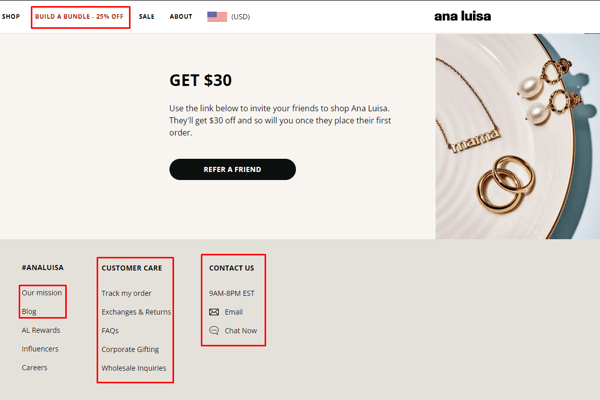
The first thing that jumps out is their “Build a bundle” shopping option. This creates the perfect personalized customer experience because it gives customers the option to create their own jewelry set just the way they like it―and for a special price, too.
Their footer section is also great because it contains direct links to important features and content put out by the brand: their blog and mission statement, as well as their service hours and their return policies. Another great thing is Ana Luisa’s “Track my order” feature, which allows the customer to get updates on their order right there and then.
On the other hand, their social media is also filled with positive touch points to ensure customer satisfaction and increase customer loyalty.
The post below, for instance, shows a really nice announcement about their new rewards program―a great tool for businesses that are keen on building their sales with repeat customers. It also shows a great example of customer interaction, since the brand is acknowledging frustrated or confused followers directly in the comments section:

Why is a positive customer experience good for business?
Because it's such a wide and even daunting concept, customer experience is often neglected by some entrepreneurs and business owners as something to be tackled later on, after a business is properly established.
This, however, is not necessarily true. In fact, having a customer experience strategy in place from the get-go can actually help your business grow, since it has the potential to help you increase sales, adjust your strategies to comply with customer expectations and gather relevant customer data.
Not only that, customer experience can also help you potentialize important aspects of your business like brand loyalty, customer retention and customer satisfaction. It’s also an important ally to have under your belt if you're planning on reducing friction points and customer complaints.
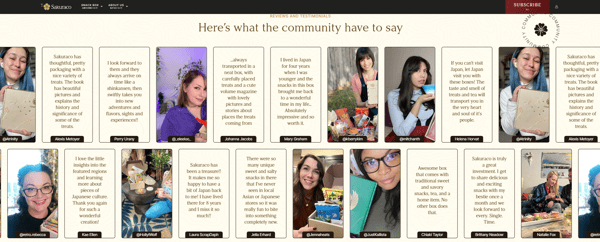
Subscription business Sakuraco has a pretty impressive tool to highlight their customer experience: the “Here’s what the community have to say” part of their homepage. Not only is it a great way to display user-generated content, but it’s also a strategy that allows the brand to showcase customer feedback and boost customer loyalty. This way, loyal customers feel acknowledged and potential customers feel more encouraged to buy.
Customer service vs customer experience
Now that we got the customer experience definition out of our way, it’s worth noting that this concept should not be confused with “customer service”. Yes, both terms have “customer” at the start and are followed by big words. But they are used to describe different things.
Customer service refers to the act of handling specific requests via email, social media or specific apps that are set up on a store’s webpage. It’s work that’s normally handled by the customer support team or chatbots, and concerns isolated pain points like issues during checkout, returning an item, placing an order, altering the delivery address, and so on.
For this reason, customer service can be seen as part of the customer experience as a whole. To illustrate this, let’s go back to Ana Luisa’s website to see their own customer service app. Have you noticed how different it is from the other aspects we mentioned earlier?

How to get started with customer experience
The key to implementing a customer experience strategy is to shift your initial focus as a business owner: Instead of making sales, you should prioritize establishing a brand (and a website) that delivers what your clients are after.
Here are some ways to do that.
1. Define your target audience
The first thing you need to do is figure out just who your target audience is. This refers to that golden group of people that are more likely to be interested in your brand and in your products.
Deciding who those people are is crucial to developing a personalized customer experience―after all, the better you know your customers, the higher the chances that they relate to your brand.
Suppose you’re starting a clothing brand that specializes in novelty pajamas and loungewear, and you want to work mainly with anime-related products from the shows you watched as a teen to the more recent ones.
This means that your target audience will likely be made up of people who:
- Are between 20 and 35 years old (a mix of millennials and Gen Z)
- Grew up with Japanese anime shows and still watch some shows on subscription businesses like Crunchyroll
- Live in the same country as you (if you’re not planning on exporting)
- Can―and are willing to―spend some money on this type of product
It might not look like much, but you can actually start assembling your customer experience strategy with just these four points. Check this out:
- Millennials and Gen Zers are no strangers to customer interactions on social media. In fact, it’s highly likely that they’re engaging daily with brands who go live on TikTok and use Instagram Stories in their strategy. This also means that their customer journey should not only be as streamlined as possible but also encompass social media and other non-traditional channels. The quicker you’re able to get them to checkout, the better.
- If they are fans of old Japanese anime shows, they probably long for some nostalgic content to bring them back to those good old days. This can be a good thing to incorporate into your content marketing strategy, since it’ll allow you to explore old anime openings, character designs and a whole lot more.
- If they live in the same country as you, then you already know what they expect in terms of shipping rates and delivery times. If not, this info should be collected in your market research.
- Knowing how much your target audience is willing to spend on a product gives your store a great competitive edge because you’ll be able to both define the correct pricing so as not to disappoint customer expectations and decide what payment solutions work best.
✌️ Interested in opening a novelty store like the one we just mentioned? Then dropshipping is definitely the way to go―and Shoplazza is here to help! We’re an ecommerce platform with tons of dropshipping-related tools and resources.
2. Gather customer feedback
Knowing who your customers are might be crucial, but gathering their thoughts and opinions about your brand can sometimes be even more important. That’s why the second element you should worry about is collecting customer feedback.
This is a great opportunity to strengthen customer relationships because it’ll give you the opportunity to hear directly from your customers (who, in turn, will feel like they’re being acknowledged by the brand). You can ask for their feedback on topics like the store’s website, recent marketing campaigns, product quality, recent product launches and even customer service.
The best way to collect customer feedback is by conducting a survey with them. And while there are tons of ways to do that, you should always be mindful of what you’ll offer in return. After all, you're asking customers to share their opinions, experiences and even some of their personal information.
To make this more appealing to your audience, try offering limited-time offers, free shipping on their next purchase or some other kind of reward.
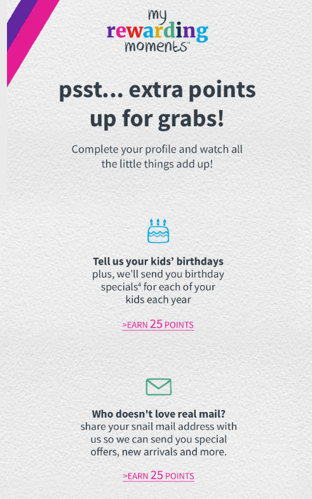
Oshkosh B'Gosh, the Australian arm of Carter’s, sends this email a couple of days after a customer signs up on their website and makes their first purchase. This is a great example of how you can conduct customer surveys to both collect data (which will help you optimize your customer journey) and gather feedback.
3. Pick out a customer experience management platform
One of the big challenges of customer experience is that you’ll need to find a way to save all of the data you’re collecting (there’s a limit to how many files your Drive folder can manage!).
Then, there’s also the issue of assessing all of the data and keeping track of everything that you’re doing to offer a superior customer experience and measure customer satisfaction, since those aren’t really tasks that you can do on your own, just by looking at the data.
This is where a customer experience management platform like Zendesk, Qualtrics or Totango can help you out. These platforms offer a wide array of specialized tools that’ll help you keep track of every customer interaction, monitor relevant metrics and stay up to date with all customer journeys.
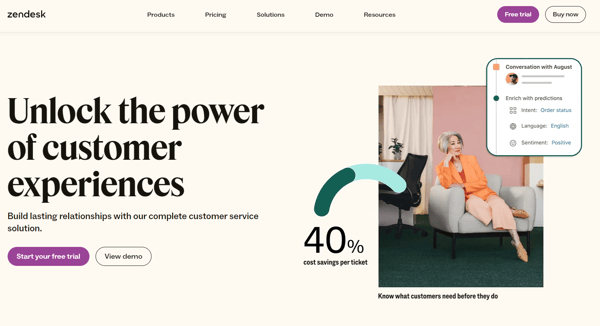
Another idea is to pick out a customer relationship management tool, or CRM. Solutions like Salesforce and Hubspot can be great allies to connect all of the customer insights you’ll be gathering, and they’ll also help you assess all the feedback and decide which marketing strategy might work best.
Did you know?
Customer relationship management tools can also come in handy for small businesses who are looking to assemble complete profiles of their customers, from demographics to specifics (like, for instance, which other similar stores they’re buying from). With this kind of data, you’ll be better equipped to make smarter business decisions.
Bonus tip for creating a personalized customer experience
Another great idea is to take a step back and go through your customer journey. What are the steps people usually need to take when they want to purchase something on your website? And how about the customer journey for those people who found your brand through Instagram and were then redirected to the store’s website?
The goal here is to really think about how you’re connecting each step of your customer journey, to figure out if there are any steps that aren’t streamlined or aren’t working as they should. If you notice that your conversion rate on social media is lower than what you’d expect, this might mean that the website is computing a lower loading time via Instagram―which, in turn, creates a poor customer experience.
The best way to identify this kind of situation is creating a customer journey map, because then you’ll be able to list every single step and conduct a proper assessment with the help of your customer experience management platform.
You can also use heatmap tactics to see how average visitors are behaving on your website and figure out what the main pain points are.
7 tips to improve your customer experience
Before you start stressing out about how to choose the best customer experience management platform for your business, let’s take a look at some easy and actionable steps you can take in order to improve your customer experience strategy.
1. Optimize your website
In this day and age, there is no excuse for having a poorly optimized website. Customers expect quick loading times, a pleasing aesthetic, and―perhaps more importantly―pages that provide an intuitive navigation experience.
This means that, in order to offer good customer experiences, your store should have:
- Product pages with concise but enticing product descriptions
- Have an intuitive checkout (more on that in just a bit!)
- A comprehensive FAQ section
- Crystal clear return and refund policies
- Nice photos of products
Bonus tip for creating a personalized customer experience
Don’t forget to optimize your store’s website for mobile devices as well. There is plenty of research that shows the number of mobile shoppers is increasing every year, so make sure that you’re able to provide your potential shoppers with a good mobile version of your shop.
Remember Ana Luisa’s website, which we mentioned right at the start of this guide? Here’s the mobile version of it. You can see how the overall feel and vibe are the same, even though some features were adapted to fit in the smaller screen.

Here are some follow-up tips on how to take your website to the next level:
2. Create an easy checkout
The checkout page is one of the most decisive elements when it comes to creating a positive customer experience for customers.
And, to be honest, it’s no rocket science: A quick, hassle-free checkout can make a business. But a burly, overly long checkout will probably make your potential customers close the website before they actually purchase the item―and that’s not what you want.
Ideally, you should consider the following options and then work towards implementing them, according to your budget and priorities:
- Accepting different payment options. Work with different payment providers that allow for one-click checkouts and/or popular payment methods to diversify your reach and attract customers who aren’t necessarily that keen on paying with their credit cards.
- Allowing customers to check out by providing the minimum amount of personal information possible. Try to integrate apps and payment solutions that ensure more customer privacy during checkout. Customers are becoming increasingly averse to having to share all kinds of personal info just to make a purchase, so the more simplified your checkout experience is, the better.
3. Send nice emails
Emails are unquestionably one of the main communication channels between a brand and their audience. It’s also one the best tools to create a good customer experience, since it allows you to send a personalized, time-sensitive offer directly to your client’s inbox.
The thing with email, though, is that you can’t always take the straight-to-the-point road and just list a bunch of offers with some CTAs. This might work on special dates, like for Mother’s Day marketing campaigns, but other than that you’ll likely be scaring customers off.
One way to avoid this is to send nice emails that are both aesthetically pleasing and informative. This will allow you to offer a personalized customer experience and, at the same time, captivate your audience with your branding and your products.

Papersmiths is a great example of how to send nice emails that prime the audience for a great customer experience. Their messages are far from being pushy because they’re able to reach a nice balance with their playful titles and headers, good-quality photos of their products and a discrete CTA.
Here are some follow-up tips on how to make your emails really pop:
- How Do I Optimize My Email Marketing Strategy?
- The Best Welcome Emails for Guaranteed Sales (+ Welcome Popup Examples)
4. Cultivate that human touch
Nothing can hurt a customer experience strategy more like a brand that is so concerned with selling at all costs that it doesn't even bother to create meaningful customer interactions.
The best way to avoid this is to work towards cultivating a nice human touch in your interactions. You’re sending out an email to announce new products or encourage sales? Be human. You’re sharing new business partnerships on Instagram? Handling a customer complaint? Sending out a notification that the order was shipped? Well, no reason why you shouldn’t be as human as possible.
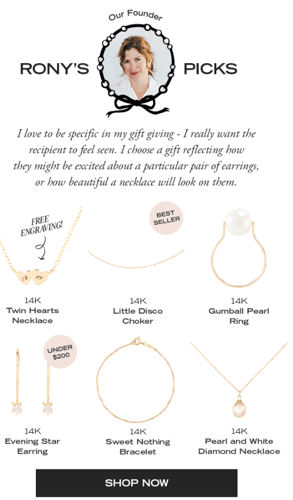
Catbird shows just how you can deliver a personalized customer experience with good potential to make sales directly in your customer’s inboxes. Recently, they’ve sent out this message with some of their founder’s picks and tips for gifting friends and other important recipients. This connects their founder with the brand’s customers, creating a meaningful bond between them.
5. Follow up (but don’t be greedy)
Another thing to be mindful of when handling a customer experience strategy is how―and when―you should follow up with clients.
There are some key moments when this type of interaction can contribute immensely to your store’s success:
- New customer sign-up
- After a purchase
- After the item is delivered
- Abandoned cart before checkout
The secret to making this work, though, is that you should not be greedy. Don’t pressure your customers with 10 different emails just to convince them to shop with you; this will end up having the direct opposite effect, and they’ll become frustrated (which means that the customer experience will be a negative one).
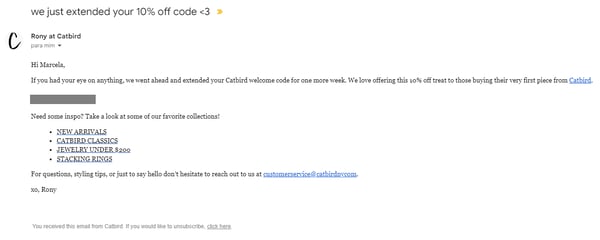
This follow-up email from Catbird is another great example of a nice customer experience. This is the second email they send after a new customer signed up at their store, after their initial promo code expired. It’s short, sweet and straight to the point, without being too greedy or pushy.
6. Create the perfect unboxing experience
Some entrepreneurs tend to associate the unboxing experience with subscription businesses, but the reality is that unboxing is a great strategy to please customers, thus generating a good customer experience.
The idea is to create an experience where everything complements the product: the bigger package that comes in the mail, the smaller envelopes or pouches that contain your products, and any complimentary gifts you might wish to send along―like a personalized note or some other small goodies.
Unboxing is also a phenomenal resource for you to use with your influencers, so keep that in mind!
7. Engage on social media
Customers want to feel acknowledged, and social media is probably the best place for you to do that. This is why, in order to create a nice customer experience for your followers, you should try to reply, like and engage with as many comments as you possibly can.
Just don’t lose sight of what’s at stake here. If you engage them haphazardly, duplicating comments you already left to other followers, customers will feel neglected and think they’re been duped.
Bonus tip for creating a personalized customer experience
Since you’re acknowledging the good and the potentially good, you should also keep in mind that acknowledging your mistakes also has a positive impact on customer experience.
This will help customers understand that while the brand can make mistakes, it’s also capable of accounting for them and recognizing that what they did was wrong.
Take a look at this post from BareMinerals, where the brand acknowledges UK customers that are currently unable to shop in a dedicated store.
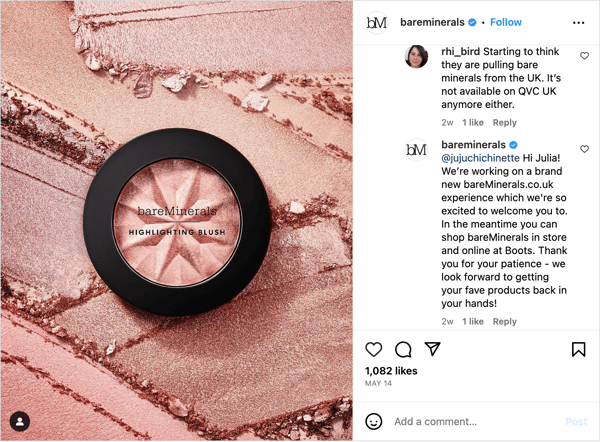
4 top metrics that’ll help you enhance customer experience
There are a couple of metrics that you should be on the lookout for after you start working with customer experience management. These will help you track your strategy’s overall performance and identify if you’re on the right track.
-
Net Promoter Score® (NPS): Largely considered one of the most important metrics for customer experience, NPS is responsible for assessing customer loyalty and the likeliness of that person recommending your store to other people.
-
Customer Satisfaction Score (CSAT): Determines the overall customer satisfaction with the brand’s products.
-
Customer Effort Score (CES): Determines how easy (or difficult) it is for a customer to perform a specific action inside the store’s website, like searching for a product, adding it to a cart, completing the checkout or signing up.
-
Average Resolution Time (ART): This metric is closely related to customer service teams and apps, since it indicates how long it takes for your team to close a ticket opened by the customers.
Customer satisfaction is the secret ingredient
Customer experience isn’t exactly a walk in the park, but that doesn’t mean that you can just avoid it like some scary monster hiding under the bed.
In fact, the more you understand about it, the more equipped you’ll be to improve your store’s strategy and keep your customers happy and satisfied. And, let’s face it, that’s the most important thing!


